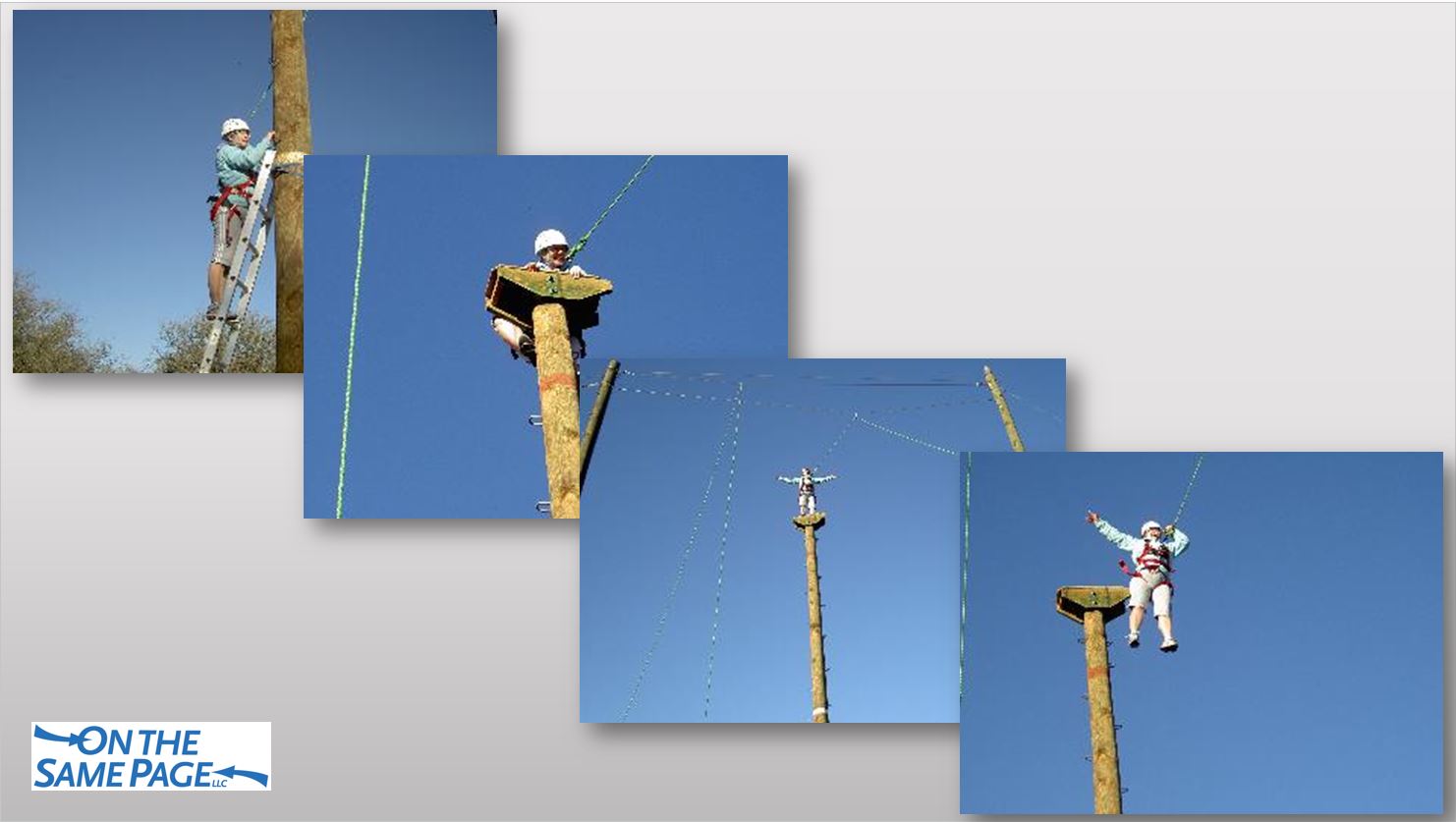You know you’re ready when the everyday circumstances of your life become uncomfortable. Like the slippers you used to love are so stretched out that it takes work to keep them on, or the holes in your favorite shirt are now bigger than the remaining material. What used to feel cozy and comfortable and familiar now begins to feel just a bit (or even a lot) suffocating.
That means you may very well be ready for a change
In my case, it crept up on me — that “knowing” that something needed shifting. I didn’t know what, I didn’t know why, and I most certainly didn’t know how. So I took myself on vacation to the Miraval Resort in Tucson, Arizona, to figure it out.
All in for whatever was ahead, I signed up for Quantum Leap. This involved getting strapped into a harness, which was connected to a rope that was held in place by fellow guests. And then climbing up a 25-foot telephone pole. And then – somehow, without a railing or anything to hold on to – standing up on a wooden platform that was about six inches by 24 inches. Oh, and then, jumping off!
In the days and weeks that followed, it felt like someone cleared the windshield without me even knowing it had been foggy. I began to see in clearer focus what was working for me in my business, what wasn’t, and how I might take a few steps forward to make that brighter picture permanent.
That was how I initiated my last big change. But there’s an easier way — one that doesn’t involve getting on a plane, putting your life in strangers’ literal hands and hoping like heck that the rope is strong!
Here’s something you can try — right here, right now — to find out if you’re ready for a change
Start with two pieces of paper and a pen. (Yes, you can do this on your computer, but truly, a new study out of Norway suggests handwriting engages the brain more than typing.)
(I can hear you thinking: “I don’t have time for this.” As I shared in a recent post, do it anyway. We do these kinds of exercises for a reason: It’s about deliberately disrupting our brain’s deeply rooted neural pathways, which would far more prefer that we stick to the status quo than make any actual change. I’m pretty sure you’ll be glad you did.)
- On the first piece of paper, write down three to five things you really like about your current situation — they can be concrete like “I love the view outside my office window” or more abstract like “I feel intellectually stimulated daily”.
- Now, next to each thing you like, write down a brief description of why you like it using the word “because”, such as:
“I love the view outside my office window because it reminds me that what I’m doing in here positively affects lots of people”, or
“I need to feel intellectually stimulated at least once per day because that gives me a big shot of energy and makes me feel more alive”.
- New list: Take the second piece of paper and write down three to five things that you really don’t like about your current situation — such as, “Working at home” or “The way my team is structured”.
- Now, you know the drill: Next to each thing you don’t like, write down a brief description of why you don’t like it using the words “I feel”, such as:
“When I work at home everyday, I feel isolated”, or
“Because of the way my team is structured, I feel it challenging to contribute my ideas”.
One more step: Take a look at the things you don’t like one by one — and the reasons you noted. For each, ask yourself two questions:
- Can this thing I don’t like be changed? For those items where the answer is yes, spend some time brainstorming on solutions or alternatives — enlist a friend or co-worker if needed …or even better, your coach!
- Where the answer is no, consider how significantly the “I feel” part affects you on a scale of one (no appreciable effect) to five (adverse effect)?, i.e.:
Feeling isolated everyday affects my mental health at a 4, or
Feeling unable to contribute my ideas affects my job satisfaction at a 3.
Finally, review your two lists side by side. What do you think: Are you ready for a transition? You might even want to keep the lists around for a few days or weeks, noting if your response to them shifts, deepens or fades. That’s good information, too.
By the way, if your assessment leads you to conclude that change is not necessary right now: Good for you! Having gone through this process should lead you to even greater appreciation and fulfillment of your current circumstances. And one day, when you begin to feel that itch, you’ll know what to do.
Learn more about our coaching options to bring some guidance and structure to the process of assessing and navigating your next change — even (especially) if you’re just starting to consider one.





